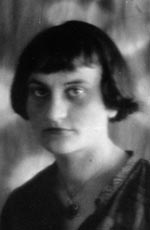(1888-1973)
Clara Tice was propelled into the spotlight of the New York art world quite unexpectedly when, in 1915, Anthony Comstock, retired captain of the Society for the Suppression of Vice, raided an exhibition of her work at Polly’s Restaurant on Washington Place in Greenwich Village. Apparently, the seventy-year-old Comstock found her delicate little drawings of nude female figures too provocative for public display. The whole affair caught the attention of Frank Crowninshield, editor of Vanity Fair magazine, who published photographs of Tice’s nudes and announced a mock trial that was going to be held in her defense at Bruno’s Garrett on Washington Square South. “She will be tried,” the announcement read, “and therefore acquitted of the charges of having committed unspeakable, black atrocities on white paper, abusing slender bodies of girls, cats, peacocks and butterflies.” Later Tice would say that Comstock was her best press agent.
Even more than her drawings of nudes, Tice’s adventurous wardrobe changed the conservative attitudes of her day. Tice was among the first to advocate wearing short dresses and rolled-up stockings, although she warned anyone who was willing to listen that women were misguided in trying to attract men on the basis of their appearances alone. “Brains [and] the ability to do things.” she declared, “are the things that attract a man.” It may have been precisely these qualities that drew her to the attention of Marcel Duchamp, whom she probably met in September 1916 at a fancy dress ball, where she won first prize and Duchamp, who served as one of the judges, was awarded the booby prize.
Through Duchamp, Tice visited the home of Walter and Louise Arensberg, who opened their art-filled apartment on West 67th Street in Manhattan to nearly nightly gatherings of New York’s most celebrated and vanguard artists and writers. Tice participated in the 1917 Independents Exhibition, showing one of her dancing nudes and a drawing of a nude with cat. She also contributed a portrait of Edgar[d] Varèse Composing to the second and last issue of The Blind Man, a journal organized by Duchamp and his friends to defend Fountain, the readymade urinal submitted to the exhibition by Duchamp (under the pseudonym R. Mutt) that was refused from display by the hanging committee.
During these years in New York, Tice’s clear and nimble drawing style was much in demand; she served as a feature artist for various newspapers, including The World, Tribune, Sun, Globe, Mail, Times, and others. She designed menus for restaurants, as well as posters for an assortment of fancy dress balls, such as The Insect Frolic, which displays one of her athletic, graceful young nudes dangling from the tail of a gigantic butterfly. For a brief period, under the editorial guidance of her friend Frank Crowninshield (whose features she once rendered entirely out of contorted nude female figures), she was employed as a staff artist for Vanity Fair, and contributed to Theatre Magazine, Cartoon, Green Book, Billboard, and others. After 1917, she would continue to produce delicate little drawings of nudes and animals, and she would go on to attain a considerable degree of popular success as an engraver and book illustrator. She continued to paint and draw until the end of her life; in 1973, she died at age 85 in her apartment in Kew Gardens, Queens.
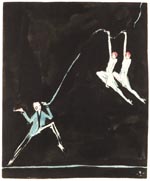

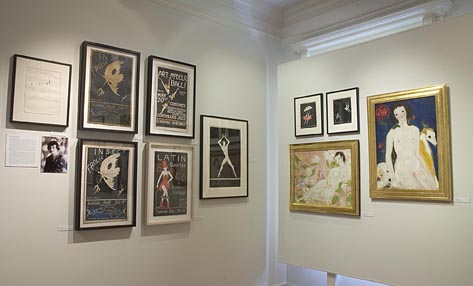
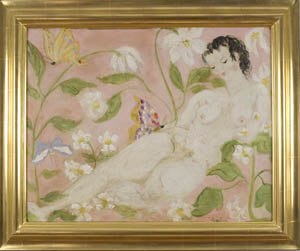
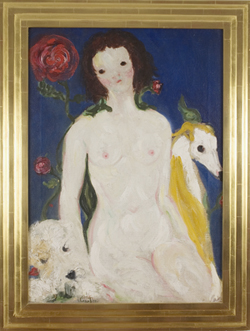
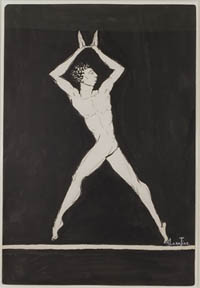
Nijinsky in Diaghileff’s L’Après-Midi d’un Faune, 1916-17
Black gouache on board, 22 x 15 inches
Nude with Butterfly, n.d.
Oil on canvas, 20 x 25 inches
Nude with Dog, n.d.
Oil on canvas, 28 x 20 inches
Two Female Dancers with Umbrellas, ca. 1917
Watercolor on paper, 9 x 6 ¼ inches
Man with Monocle and Two Floating Dancers, ca. 1917
Watercolor on paper, 9 x 6 ¼ inches
![[Francis Naumann]](../4logo.gif)
![[Francis Naumann]](../4logo.gif)
